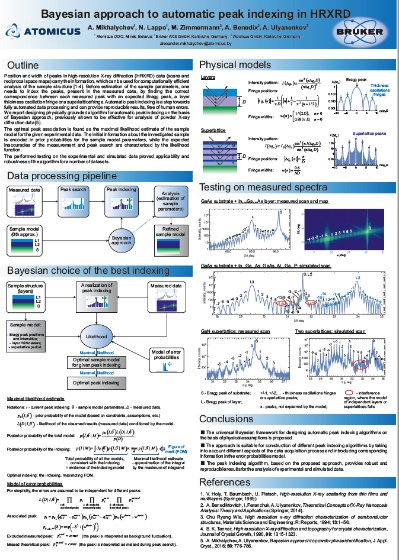Analytical software
Does your company manufacture analytical instrumentation? The instruments you create definitely need a software interface for hardware manipulation and data acquisition, preprocessing, and analysis. We’ve been producing this software for almost two decades and can design and develop the whole concept to fit your instruments and customers. Our programmers and physicists handle everything from firmware and communication interfaces to instrument control modules and data collection and analysis, allowing you to develop both a modern graphical user interface and fundamental analysis kernels. Our analytical software works for various methods, including:
- Nuclear magnetic resonance (NMR), electron paramagnetic resonance (EPR), and magnetic resonance imaging (MRI)
- Molecular spectroscopy (GC/MS, LC/MS, and ICP/MS)
- Atomic force microscopy (AFM) and optical microscopy
- Infrared and NIR spectrometry
- Raman spectroscopy
- MALDI and TOF
- Calorimetry and thermal analysis
- Mass spectrometry
- SEM and TEM microscopy
- Many other methods
The Atomicus team has been developing software for various branches of X-ray analytical instrumentation since 1998. We have worked with several global players in this market to develop modern software products for X-ray data measurement, processing, and analysis for thousands of instruments installed worldwide in different branches of industry and science. Our specializations include X-ray diffraction and spectroscopy, which are used in a wide range of applications and industries, including automotive, chemical, pharmaceutical, oil, mineralogy and geology, semiconductor, metals, life sciences, cement, and polymers.
Atomicus has over 15 years of experience in developing products and solutions for instrumentation involving X-ray scattering techniques, including the following applications:
- High-resolution X-ray diffraction, including geometrical considerations
- Diffraction from imperfect structures, such as dislocations, defects, miscuts, etc.
- Powder X-ray diffraction using multiple approaches
- X-ray reflectivity, including diffuse scattering
- Crystallographic texture analysis
- Residual stress analysis
- Small-angle X-ray scattering, including grazing-incidence configurations
- Pair distribution function methods
- X-ray fluorescence
- X-ray tomography, topography, and imaging
- X-ray proteomics
The Atomicus team is proud to be a partner of Bruker, Rigaku, Adani, Stoe & Cie GmbH, Thermo Fisher Scientific, Cameca, Applied Spectra and European X-ray Free Electron Laser, global corporations that supply analytical instrumentation for large-scale and long-term software development projects.
In addition to direct experience in the physical interpretation of X-ray data, Atomicus developers have a deep understanding of general processing of massive volumes of data, mathematical methods of optimization, 3D graphics, and many other techniques supplementing modern analytical tools. The Atomicus team’s valuable experience in the business and science of X-ray analysis is applicable to any areas of analytical instrumentation that require fundamental physical methodology and knowledge.
Atomicus also implements the modern algorithms of artificial intelligence and machine learning, such as the Bayesian approach and Fisher information methods, into developed software.





